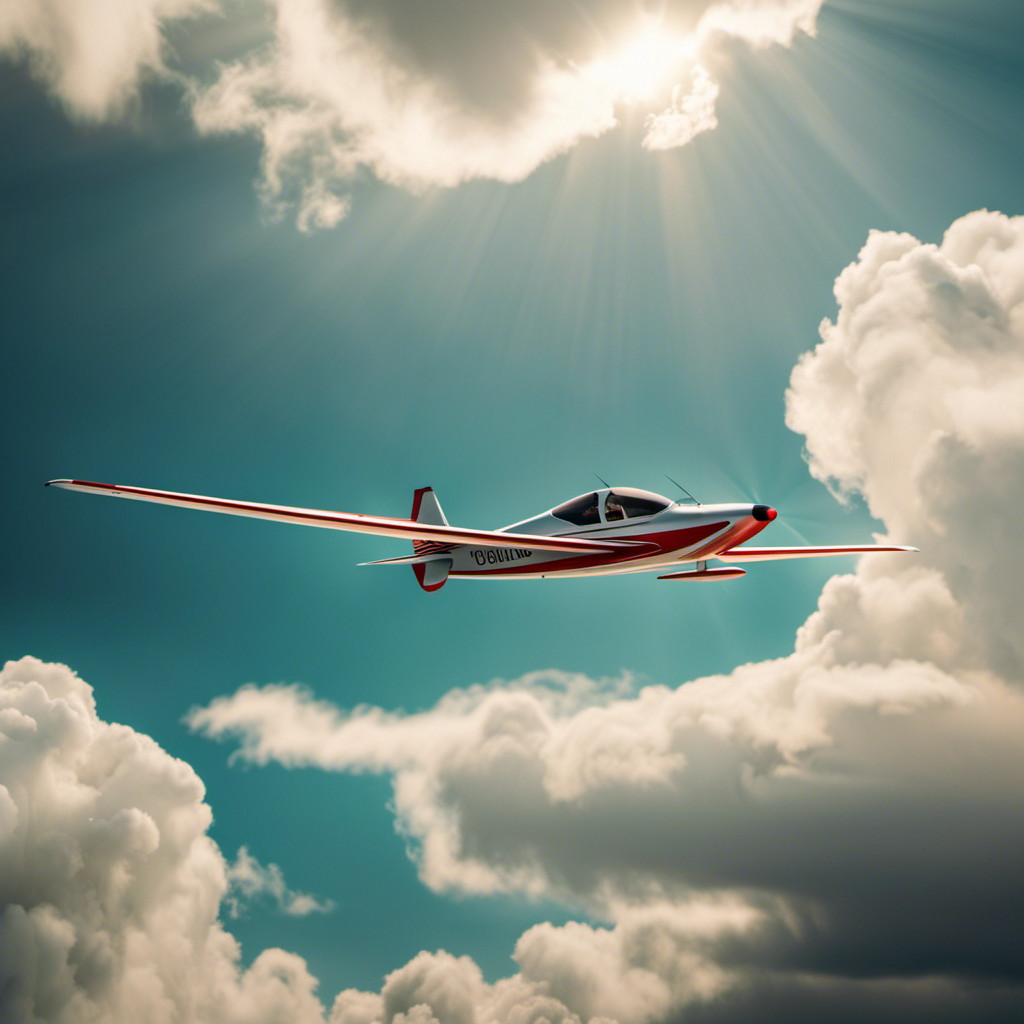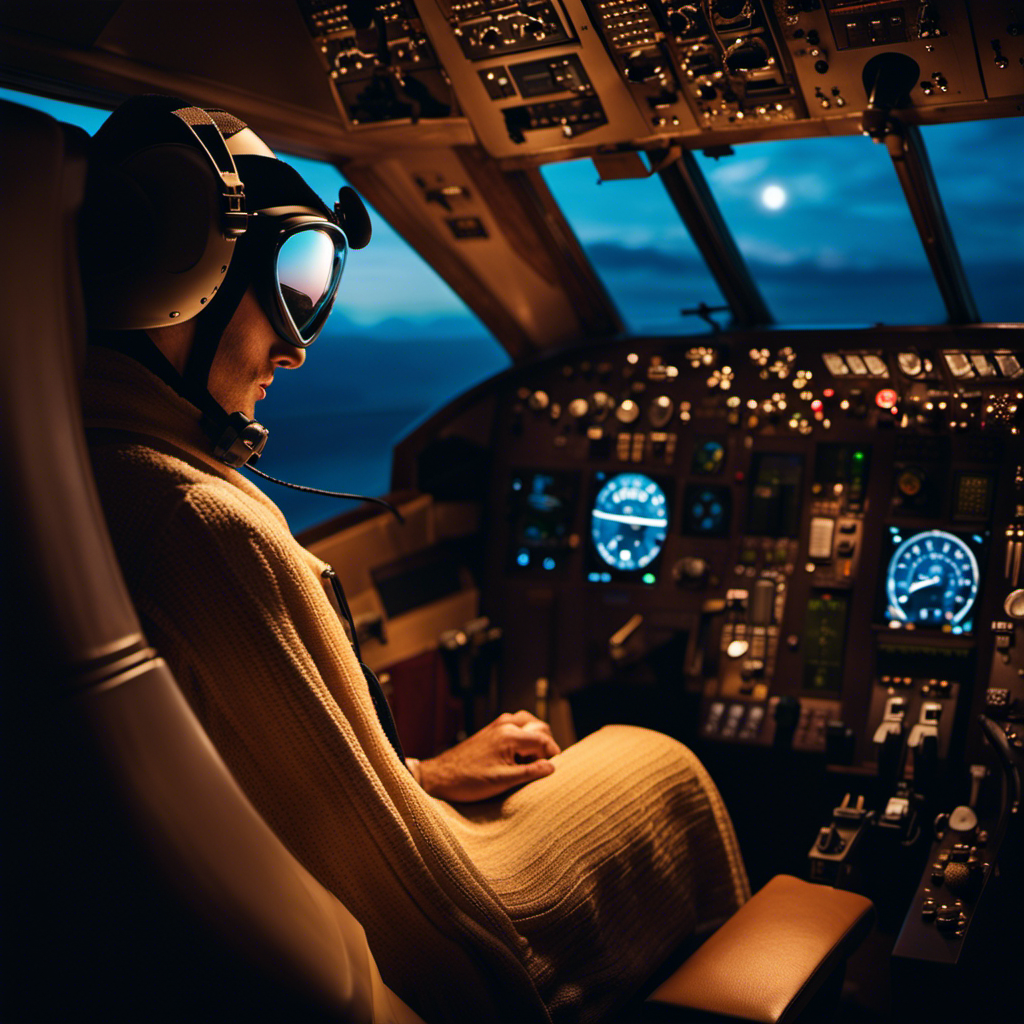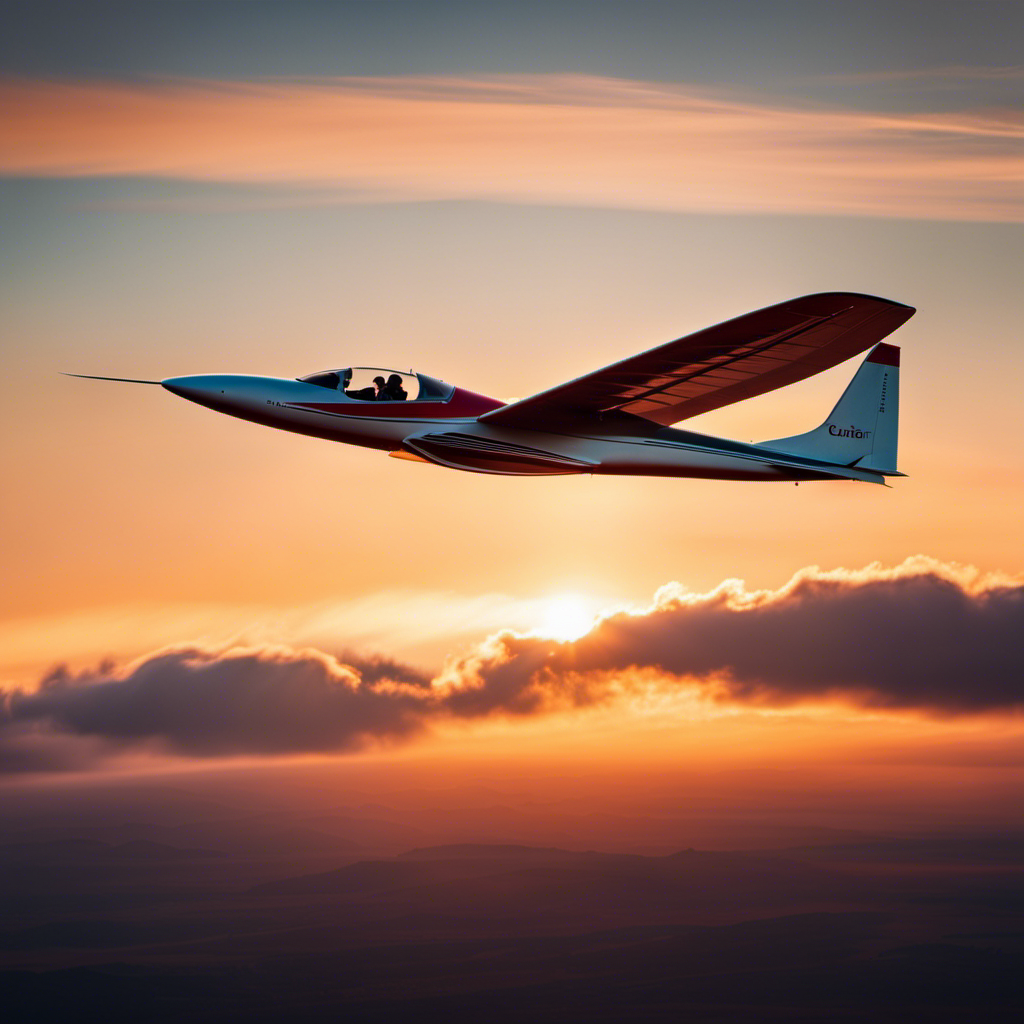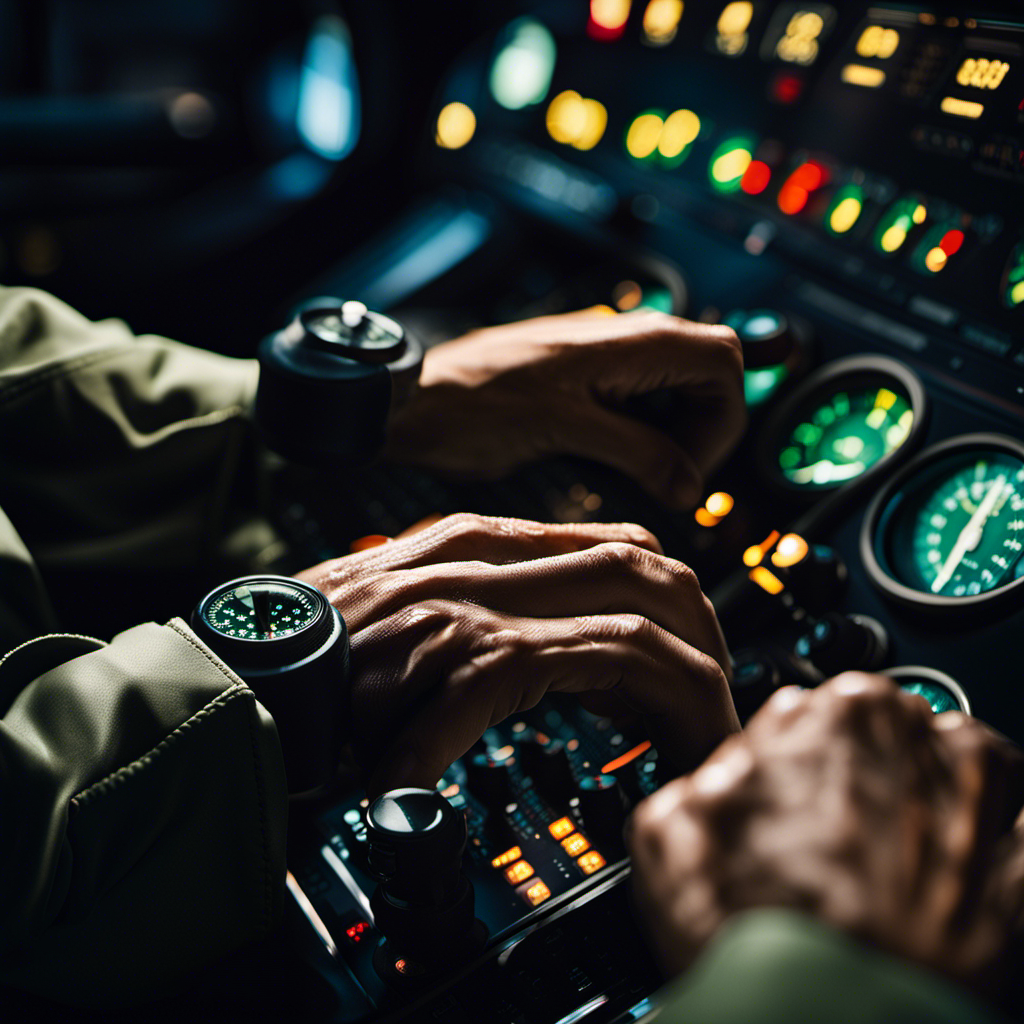As a dedicated glider pilot, I have always been amazed by the impressive accomplishment of flying without an engine.
Have you ever wondered, just how long can a glider plane stay up?
In this article, we’ll dive deep into the world of glider planes, exploring the forces that keep them in the air and the factors that affect their flight duration.
We’ll also uncover the world record for the longest glider flight and discuss techniques for extending a glider plane’s flight time.
Get ready to soar through the captivating realm of glider plane flying!
Key Takeaways
- Solar-powered gliders and integration of electric propulsion systems allow for longer and more sustainable journeys in glider planes.
- Famous glider pilots, such as Klaus Ohlmann and Steve Fossett, have achieved remarkable feats, showcasing the potential of glider planes in competitions and inspiring others to take up the sport.
- Safety considerations, including checking weather conditions, inspecting the glider for potential issues, and understanding emergency procedures, are crucial for glider plane flight.
- Weather conditions, such as strong winds, turbulence, and temperature changes, can impact the performance and stability of glider planes, highlighting the importance of continuous monitoring for safe flight.
The Basics of Glider Planes
Glider planes don’t have engines and rely on natural air currents to stay up. The mechanics of a glider plane are designed to maximize its aerodynamic efficiency. The shape of the wings, known as the airfoil, is crucial in generating lift. The curved upper surface of the wing helps to create lower air pressure, while the flatter lower surface allows for higher air pressure. This pressure difference generates lift, allowing the glider plane to stay airborne.
Additionally, the weight distribution of the glider plane is carefully balanced to ensure stability and control. By understanding the intricate interplay of glider plane mechanics and aerodynamics, pilots can maneuver the aircraft with precision and efficiency.
Now, let’s delve deeper into the forces that keep glider planes in the air.
Understanding the Forces that Keep Glider Planes in the Air
To understand how glider planes stay airborne, you need to grasp the forces at play. Glider planes rely on the principles of aerodynamics to generate lift and overcome gravity. The forces of lift are essential in keeping the glider plane in the air.
Here are four key factors that contribute to the forces of lift:
-
Angle of attack: By adjusting the angle at which the glider plane meets the oncoming air, the pilot can increase or decrease the lift force.
-
Wing shape: The design of the wings, including their curvature and length, affects the lift generated by the glider plane.
-
Airspeed: The faster the glider plane moves through the air, the greater the lift force it can generate.
-
Air density: Changes in air density due to altitude or weather conditions can impact the lift force experienced by the glider plane.
These forces of lift, combined with other aerodynamic principles, allow glider planes to stay airborne.
Now, let’s explore the factors that affect the duration of a glider plane’s flight.
Factors that Affect the Duration of a Glider Plane’s Flight
If you want to maximize the duration of your flight in a glider plane, you should consider factors such as wind speed and thermals. These are critical factors affecting lift, which is essential for the glider to stay airborne.
Wind speed plays a significant role in generating lift by creating pressure differences on the glider’s wings. A strong headwind can increase the glider’s airspeed, resulting in more lift and longer flight durations.
Thermals, on the other hand, are rising columns of warm air that can provide the glider with extra lift. By strategically flying in areas with strong thermals, glider pilots can extend their flight times. Additionally, weather conditions such as temperature, humidity, and atmospheric stability can impact the presence and strength of thermals, further influencing the duration of a glider plane’s flight.
With an understanding of the factors affecting lift and the impact of weather conditions, we can now explore the world record for the longest glider flight.
The World Record for Longest Glider Flight
You’ll be fascinated to learn about the world record for the longest glider flight. Holding the record at an astounding 1,944 kilometers, Klaus Ohlmann achieved this feat in 2003.
To maximize his flight time, Ohlmann employed several strategies. He meticulously planned his route to take advantage of favorable weather conditions, avoiding areas with strong headwinds. Ohlmann also utilized thermal updrafts and ridge lift to gain altitude and extend his flight. His glider, equipped with advanced technology, allowed for efficient energy management and reduced drag.
Ohlmann’s record-setting flight demonstrates the importance of careful planning and strategic decision-making in world record attempts.
Now, let’s explore the techniques for extending a glider plane’s flight time.
Techniques for Extending a Glider Plane’s Flight Time
Klaus Ohlmann achieved the world record for the longest glider flight by utilizing various strategies to extend his time in the air.
Glider plane maintenance plays a crucial role in maximizing flight duration. Regular inspections and repairs ensure optimal performance of the aircraft.
Additionally, attention to glider plane aerodynamics is essential. Minimizing drag through streamlined designs and smooth surfaces reduces energy consumption, allowing the glider to stay aloft for longer periods.
Ohlmann also used thermals, ridge lifts, and wave systems to his advantage, capitalizing on natural phenomena to gain altitude and extend his flight time. These techniques, combined with careful planning and navigation, enabled him to achieve remarkable endurance in the air.
However, challenges and limitations still exist when it comes to glider plane flight duration, which we will explore in the next section.
Challenges and Limitations of Glider Plane Flight Duration
After exploring techniques for extending a glider plane’s flight time, it is important to consider the challenges and limitations that affect glider plane endurance.
One of the main challenges is the dependence on atmospheric conditions. Glider planes heavily rely on thermal updrafts and wind patterns to stay aloft. However, these conditions can be unpredictable and vary greatly from one location to another.
Strategies for maximizing flight time involve careful planning and analysis of weather patterns, as well as skillful piloting techniques. Pilots must constantly monitor weather forecasts and make strategic decisions to take advantage of favorable conditions.
Despite these strategies, glider plane endurance is ultimately limited by the natural forces at play. Nevertheless, innovations and advancements in glider plane technology continue to push the boundaries of flight duration, allowing for longer and more efficient flights.
Innovations and Advancements in Glider Plane Technology
Advancements in glider plane technology have led to longer and more efficient flights. One notable innovation is the integration of electric propulsion systems in gliders. These systems, powered by batteries or fuel cells, provide an additional source of thrust, enabling gliders to stay aloft for extended periods.
Electric propulsion significantly reduces the dependence on thermal updrafts and allows glider pilots to maintain altitude even when these updrafts are scarce. Furthermore, the development of solar-powered gliders has further extended flight durations. These gliders are equipped with solar panels that convert sunlight into electricity, which can be used to power the electric propulsion systems or charge the onboard batteries.
With this technology, gliders can harness the energy of the sun to sustain flight, ensuring longer and more sustainable journeys.
Transitioning to the subsequent section, the remarkable flights of famous glider pilots demonstrate the incredible potential of these advancements.
Famous Glider Pilots and Their Remarkable Flights
One notable innovation in glider plane technology is the integration of electric propulsion systems, which have allowed for longer and more efficient flights. This advancement has opened up new possibilities for glider pilots, enabling them to push the boundaries of their flights and achieve remarkable feats.
Famous glider pilots, such as Klaus Ohlmann and Steve Fossett, have made headlines with their extraordinary flights. Ohlmann, for instance, holds the world record for the longest glider flight, covering a distance of 3,008 kilometers. Fossett, on the other hand, completed the first solo non-stop circumnavigation of the Earth in a glider. These pilots have showcased the potential of glider planes in competitions and have inspired others to take up the sport.
As we explore the remarkable flights of these pilots, it is crucial to also consider the safety considerations and precautions for glider plane flight.
Safety Considerations and Precautions for Glider Plane Flight
To ensure your safety during glider flights, remember to always check the weather conditions and follow the recommended precautions. Glider plane safety is of utmost importance, as these aircraft rely solely on wind currents and thermals for lift.
Before taking off, it is crucial to inspect the glider for any potential issues and ensure all necessary emergency equipment is onboard. It is also important to have a thorough understanding of emergency procedures, such as how to handle an unexpected loss of lift or a sudden change in weather conditions.
Weather conditions play a significant role in glider plane flight, as strong winds, turbulence, or sudden changes in temperature can greatly impact the performance and stability of the aircraft. By staying vigilant and continuously monitoring weather conditions, you can ensure a safe and enjoyable glider flight experience.
Transition: Now that we have discussed the safety considerations and precautions for glider plane flight, let’s explore the thrill and beauty of glider plane flying.
The Thrill and Beauty of Glider Plane Flying
Experience the breathtaking sensation of soaring through the sky and witnessing the awe-inspiring beauty of nature from a glider plane.
Glider plane aerobatics and competitions are two thrilling aspects of this incredible sport. Glider planes are designed to perform aerobatic maneuvers, showcasing the pilot’s skill and precision. These maneuvers include loops, rolls, spins, and dives, all adding to the excitement of the flight.
Glider plane competitions take this thrill to the next level, where pilots compete against each other in various categories, such as precision flying and speed races. These events showcase the capabilities of glider planes and test the skills of the pilots.
The combination of the technical aspects of flying and the beauty of nature makes glider plane flying a truly exhilarating experience.
Frequently Asked Questions
Are glider planes powered by an engine?
No, glider planes are not powered by engines. Instead, they rely on natural forces such as wind and thermals to stay aloft. Engineless flight offers advantages such as reduced noise, lower operating costs, and a greater sense of freedom.
How high can a glider plane fly?
The maximum altitude a glider plane can reach depends on several factors, such as wind conditions, thermal activity, and the pilot’s skill. These factors also affect the flight duration of a glider plane.
What is the average duration of a glider flight?
The average flight time of a glider can vary depending on several factors. These factors include weather conditions, thermal activity, pilot skill, and glider design. These variables contribute to the duration of a glider flight.
Can glider planes fly at night?
Glider planes can fly at night, but there are strict regulations and safety precautions to follow. Night flying regulations include requirements for lights, instruments, and pilot training. Safety precautions involve increased awareness of visual limitations and potential hazards during nighttime operations.
Are there any restrictions on where glider planes can fly?
It’s absolutely fascinating how glider planes have the freedom to fly almost anywhere, except for those pesky restricted airspace areas and regulations that govern their flights. The world is their oyster, with a few exceptions, of course.
Conclusion
In conclusion, after extensive research, it is clear that glider planes have the remarkable ability to stay aloft for extended periods of time. The forces of lift and gravity, along with various external factors, play a crucial role in determining the duration of a glider’s flight.
By employing advanced techniques and innovations, pilots can further extend the flight time of these incredible aircraft. However, it is important to prioritize safety considerations and adhere to precautionary measures when engaging in glider plane flying.
The thrill and beauty of gliding through the air is truly unparalleled.
Orion, better known as “Jetstream,” is the voice that brings the stories of the skies to life. His fascination with aviation began at a young age, sparked by his father’s tales of flying and adventure. Orion’s journey into the world of gliding was serendipitous, and from the moment he took his first glider flight, he knew he had found his calling.










